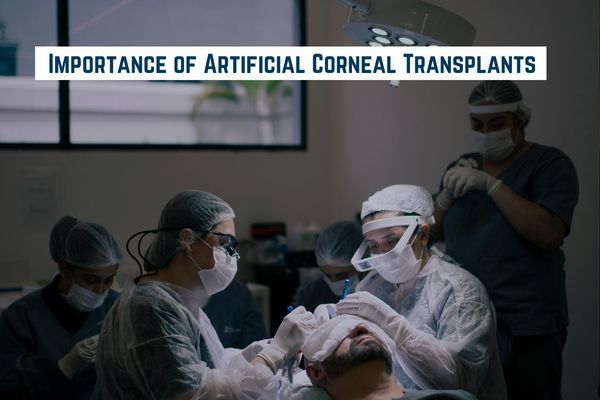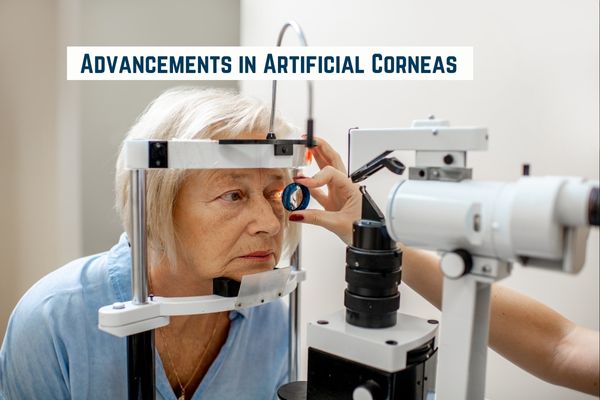Objective
This article delves into the transformative role that nanotechnology and advanced materials are playing in the future of artificial corneal transplants. With significant advancements in the fields of material science and nanotechnology, the potential for improving the success rates, biocompatibility and long-term functionality of synthetic corneal implants is becoming increasingly apparent. As the demand for artificial cornea implants grows due to various eye diseases, injuries and genetic conditions, understanding these advancements is crucial for both patients and healthcare professionals alike.
What Are Artificial Corneal Transplants and Why Are They Important?

Common Causes of Corneal Damage
Several conditions can lead to corneal damage, including:
- Keratoconus, a progressive thinning of the cornea
- Traumatic injury, such as burns or deep abrasions
- Infections that damage the corneal tissue
- Fuchs’ dystrophy, a genetic condition causing the cornea to lose its ability to pump out fluid, leading to swelling and clouding.
For patients who are unable to receive a donor transplant, synthetic corneal implants may be a crucial alternative. These implants can help restore clear vision and protect the eye from further damage.
How is Nanotechnology Revolutionizing Artificial Corneal Implants?
Nanotechnology is increasingly becoming a game-changer in the medical field and corneal surgery is no exception. By manipulating materials at the molecular or atomic scale, nanotechnology offers the potential to significantly improve the design, functionality and performance of artificial corneal implants.
What Role Do Nanomaterials Play in Artificial Corneas?
Nanomaterials, such as carbon nanotubes, graphene and nanocomposites, are being incorporated into synthetic corneas to enhance their strength, flexibility and transparency. These materials may also improve the biocompatibility of artificial corneal implants, which is crucial for reducing the risk of immune rejection and inflammation after surgery.
For instance, graphene, known for its exceptional strength and transparency, may offer a lightweight yet durable solution for artificial corneas. Additionally, nanostructures could allow for more precise control over the optical properties of the cornea, leading to better visual outcomes for patients.
Testimonials
“Extremely gentle, professional and informative, Could not wish for more“
How Are Advanced Materials Enhancing the Biocompatibility of Synthetic Corneal Implants?
Biocompatibility – the ability of a material to coexist with the body without causing adverse reactions – is one of the key challenges in developing artificial cornea transplants. To be effective, synthetic implants must integrate seamlessly with the eye’s natural tissues, especially the delicate corneal layers.
What Are the Latest Advancements in Biocompatibility?
Recent innovations in material science have focused on improving the biocompatibility of synthetic corneas. Advanced materials, such as hydrogel-based corneal implants, are being used to mimic the natural properties of the human cornea. These hydrogels are not only highly transparent but also possess a similar flexibility and moisture retention ability as the natural cornea.
Moreover, bioactive coatings made from materials like collagen, hyaluronic acid or silicone-based polymers are being tested to enhance the bonding of synthetic implants to the eye’s tissues. This could potentially minimize rejection rates and improve the overall success of artificial corneal transplants.
Improving Long-Term Success with Self-Healing Materials
Another promising area of research is the development of self-healing materials for synthetic corneas. These materials can repair minor scratches or tears automatically, improving the long-term durability and function of the implant. This innovation could significantly extend the life of the artificial cornea and reduce the need for future surgeries.
What Are the Success Rates of Artificial Corneal Transplants Using Nanotechnology?
The success rate of artificial corneal transplants has steadily increased with the advancement of nanotechnology and advanced materials. While synthetic corneas have traditionally faced challenges related to immune rejection, opacity and integration with natural tissues, these new developments are significantly improving outcomes.
Client Speaks
“I am confident about this doctor“
Improved Integration and Reduced Rejection
Nanotechnology allows for better surface coatings and optimized implant designs, which help the synthetic material integrate more effectively with the eye’s natural tissues. This can reduce inflammation, the risk of immune rejection and the occurrence of complications such as infection or scarring. Consequently, the success rates of artificial cornea surgeries are improving.
Enhanced Optical Performance

Thanks to advances in nanomaterials, artificial corneal implants are now more transparent and closer in performance to natural corneal tissue. This not only improves visual outcomes but also reduces the likelihood of issues like glare and halos around lights, which were common with older synthetic implants.
How Will Future Innovations Shape the Artificial Cornea Landscape?
The future of artificial corneal transplants looks promising with continued advancements in nanotechnology and material science. The goal is to create more durable, biocompatible and functional synthetic corneas that provide long-lasting vision restoration for those in need of corneal replacement.
Personalized Implants for Better Outcomes
Future artificial corneal implants may be personalized using 3D printing technology, allowing for more precise, patient-specific implants. This would improve the fit, comfort and visual outcomes for patients undergoing synthetic corneal surgery. Personalized implants could also take into account factors like corneal curvature and individual tissue compatibility, enhancing overall surgical success.
Hybrid Materials and Smart Implants
As research progresses, hybrid materials combining natural and synthetic components may provide the best of both worlds: the flexibility and transparency of natural tissue with the durability and strength of synthetic materials. Smart implants – which incorporate sensors and other monitoring technologies – may also be developed to track the health of the cornea in real-time, providing feedback to both the patient and the doctor.
Conclusion
With advancements in nanotechnology and material science, the future of artificial corneal transplants is becoming increasingly promising. These innovations are improving the success rates, biocompatibility and long-term performance of synthetic corneal implants, offering new hope to patients with damaged or diseased corneas. As nanotechnology continues to shape the field, we can expect synthetic corneal surgery to become a more accessible and effective option for restoring vision in those who need it most.
